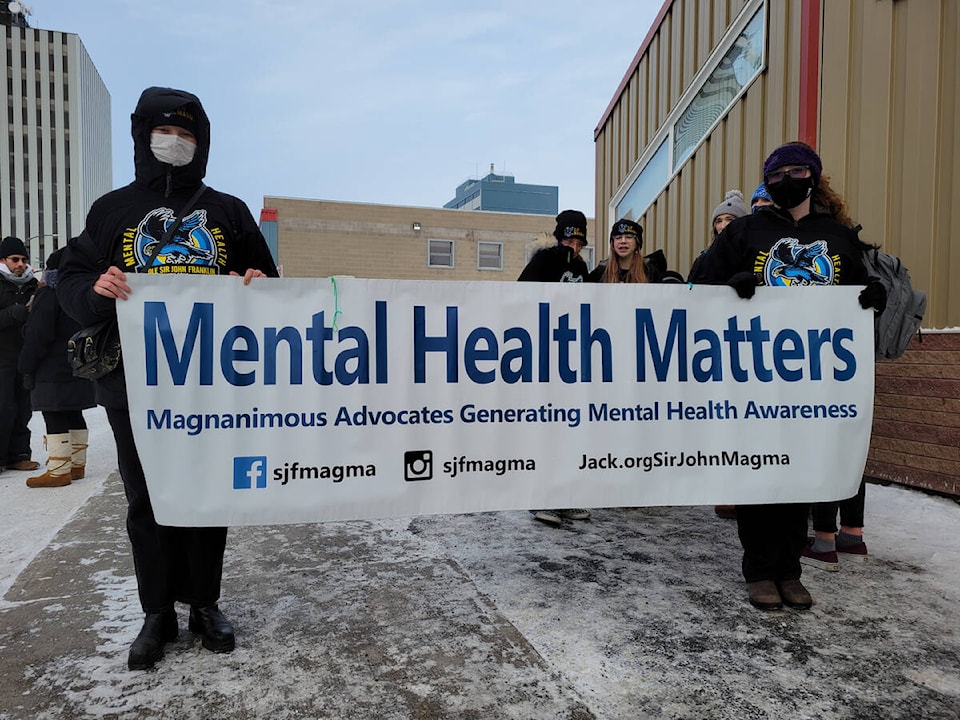With International Women’s Day marked on March 8, we can look to our Legislative Assembly as an example of progress towards gender equity.
Ten of 19 MLAs are women. It was a record high number of female candidates who were successful in the October 2019 territorial election, nine, including five of the seven seats in Yellowknife, and the by-election of Jane Weyallon Armstrong pushed the NWT Legislative Assembly into majority female territory, a first for Canada.
Veteran observers of territorial politics sometimes get caught up in the dynamics between our legislators. Pitched battles between regular MLAs and cabinet ministers are common.
One of the more compelling series of clashes has been between Great Slave MLA Katrina Nokleby and Health and Social Services Minister Julie Green.
If the pun could be forgiven, the two butted heads on Feb. 23 and it was about the same subject – mental health.
When the two squared off on that topic in February 2021, Green accused Nokleby of soliciting mental health horror stories through Facebook. Nokleby countered that the insinuation was “disgusting.” Green later apologized.
“We have no residential trauma program, no residential treatment program for youth, no child and adolescent unit at Stanton (hospital), and the solution seems to be to ship vulnerable people off to another part of the country, causing further trauma,” said Nokleby, who cited a life lost to suicide in Fort Smith recently and two other reported attempts. On Feb. 23, she again called the situation a “crisis.”
Nokleby later asked Green about the Child and Youth Mental Wellness Action Plan, which was supposed to span 2017 to 2022.
“I’m not familiar with this report, so I’ll have to come back with that information,” Green replied.
Nokleby aptly deemed the response “concerning.”
Green pointed out that there’s a child and youth care counselling program and a community counselling program, although there are always vacancies among those positions. The minister also acknowledged that the pandemic has taken a toll on some residents’ well-being, but she disagreed with the term “crisis” in regards to mental health and said, “I feel confident that we’re not facing anything we can’t deal with.”
The statistics, which are cold, hard and unemotional, provide contrary evidence. The NWT’s suicide rate stands second highest in the country, only surpassed by Nunavut.
The Department of Health and Social Services’ website lists six “NWT facility based treatment options for addictions,” all of them in Western Canada, two of them accessible with pre-approval only. There is no addictions treatment facility in the NWT and that’s a failure. The last territorial treatment centre in operation was Nats’ejee K’eh in Hay River, until 2013.
Nunavut is scheduled to have an addictions and trauma treatment centre open in 2025. That took years of negotiations between the federal government, the Government of Nunavut and Nunavut Tunngavik Inc., an Inuit land claims organization. Northern Affairs Minister Dan Vandal announced $41.7 million in federal support for that facility last summer.
Would the GNWT, the Dene Nation and the Metis Nation combining forces not have enough clout to convince Ottawa to do the same for our territory? It should be attempted emphatically.
A treatment centre isn’t the sole answer, however. Green also noted that the GNWT is setting aside $17.5 million for mental health supports. That comes from a health and social services budget of close to $600 million. Close to $12 million is earmarked for the Covid Secretariat over the next year. It sure would be nice to see most or all of that money going to mental health initiatives instead.
At a meeting between provincial and territorial leaders and federal officials last November, there was bickering over whether the federal government should transfer funds to provinces and territories specifically for mental health and how much more funding the jurisdictions need.
Meanwhile, Michel Rodrigue, president of the Mental Health Commission of Canada, mentioned that England devotes 12 per cent of its health budget to mental health compared to Canada’s seven per cent.
So it seems like there’s a lot of wrangling going on among politicians at various levels while everyday people are trying to cope with despair. The idea of a “Let’s Talk” day to advocate for mental health is well and fine, but when it comes to our elected leaders, we need less talk and more action.
